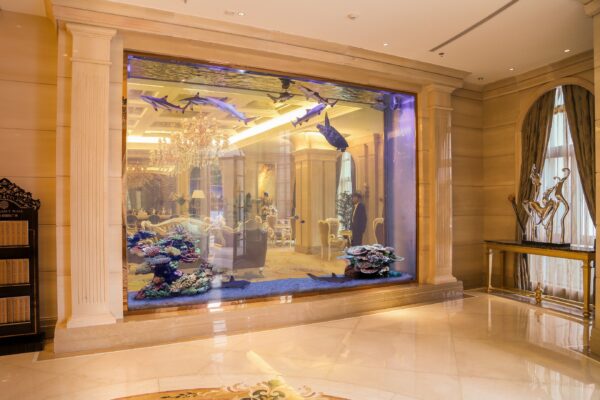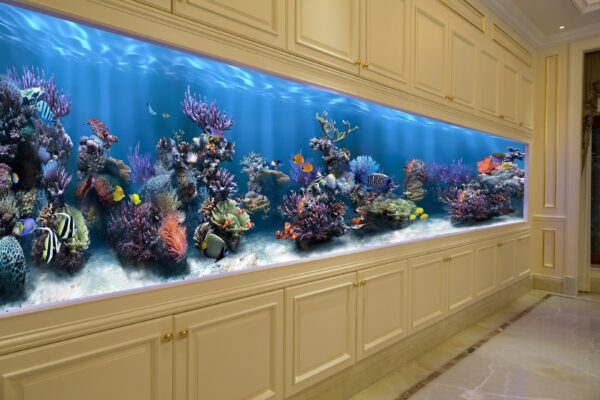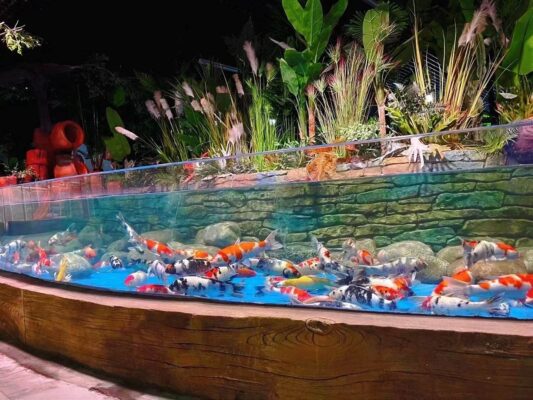Why Acrylic Fish Tanks Are the Ultimate Choice for Aquarium Enthusiasts
Acrylic fish tanks have transformed the aquarium industry, offering a perfect blend of beauty, functionality, and durability. Whether you’re a seasoned aquarist or a beginner exploring the world of fishkeeping, this article highlights why acrylic fish tanks are the top choice for enthusiasts worldwide. Dive in as we explore the captivating benefits of acrylic aquariums and how they can bring the wonders of the ocean into your home.
Crystal Clarity and Optimal Viewing
One of the standout features of acrylic fish tanks is their crystal-clear clarity. Unlike traditional glass tanks, acrylic provides distortion-free viewing from all angles, creating an immersive experience. You can admire your fish and aquatic plants in stunning detail without the distortion caused by seams or joints. Acrylic’s optical clarity is unmatched, offering a breathtaking view of your underwater world.
For more on the benefits of acrylic clarity, check out this guide to aquarium materials.
Lightweight and Durable
Acrylic is significantly lighter than glass, making it easier to transport, install, and reposition. Despite its lightweight nature, acrylic is incredibly durable and shatter-resistant, reducing the risk of breakage. This durability ensures your aquarium remains a safe and long-lasting home for your aquatic pets.
Learn more about the durability of acrylic tanks here.
Versatile and Customizable
Acrylic’s versatility allows for endless customization. Whether you want a classic rectangular tank or a uniquely shaped masterpiece, acrylic can be molded to fit your vision. Its flexibility also enables seamless integration of features like built-in filtration systems and overflow boxes, enhancing both functionality and aesthetics.
Explore custom acrylic tank designs here.
Thermally Insulating
Acrylic aquariums excel at retaining heat, which is crucial for maintaining a stable water temperature. This energy-efficient quality not only creates a comfortable environment for your fish but also helps reduce heating costs.
For tips on maintaining water temperature, visit this resource.
Easy Maintenance
Acrylic fish tanks are easy to maintain. The smooth surface resists algae growth and is less prone to scratches compared to glass. Cleaning becomes a hassle-free task, allowing you to spend more time enjoying your aquatic hobby.
Check out this maintenance guide for acrylic tanks.
Safe for Your Fish
Acrylic tanks are free of sharp edges and corners, ensuring the safety of your fish and other aquatic creatures. The absence of silicone seams (common in glass tanks) also reduces the risk of leaks, providing a secure environment for your aquatic friends.
Learn more about aquarium safety here.
Ideal for Reef and Marine Tanks
Acrylic’s clarity and durability make it perfect for marine and reef aquariums. It allows for optimal light penetration, which is essential for the health and growth of corals and other photosynthetic organisms. Your marine ecosystem will thrive in the stunning clarity of an acrylic fish tank.
For marine tank setup tips, visit this guide.
Conclusion
Acrylic fish tanks are a perfect blend of art and science, offering an unparalleled aquatic experience for enthusiasts of all levels. With their crystal clarity, lightweight durability, versatility, thermal insulation, ease of maintenance, safety, and suitability for marine environments, they are the ultimate choice for showcasing the wonders of the underwater world in your home.
If you’re ready to dive into the world of fishkeeping or upgrade your existing tank, an acrylic fish tank is your gateway to a breathtaking underwater realm. Bring the beauty of the ocean into your living space with an acrylic aquarium, and watch your aquatic world flourish in elegance and innovation.
Additional Resources
For more information on acrylic fish tanks, check out these resources:



